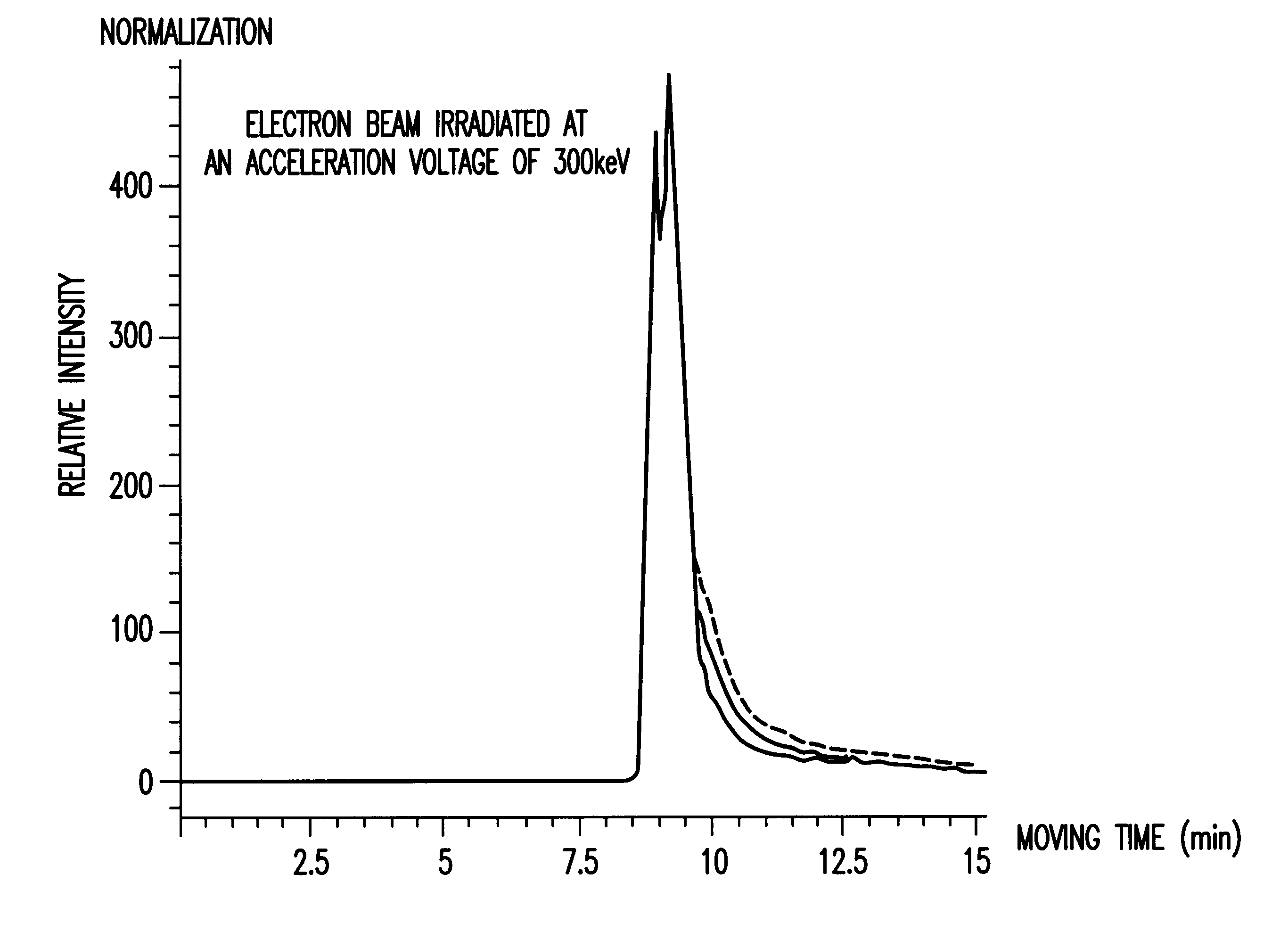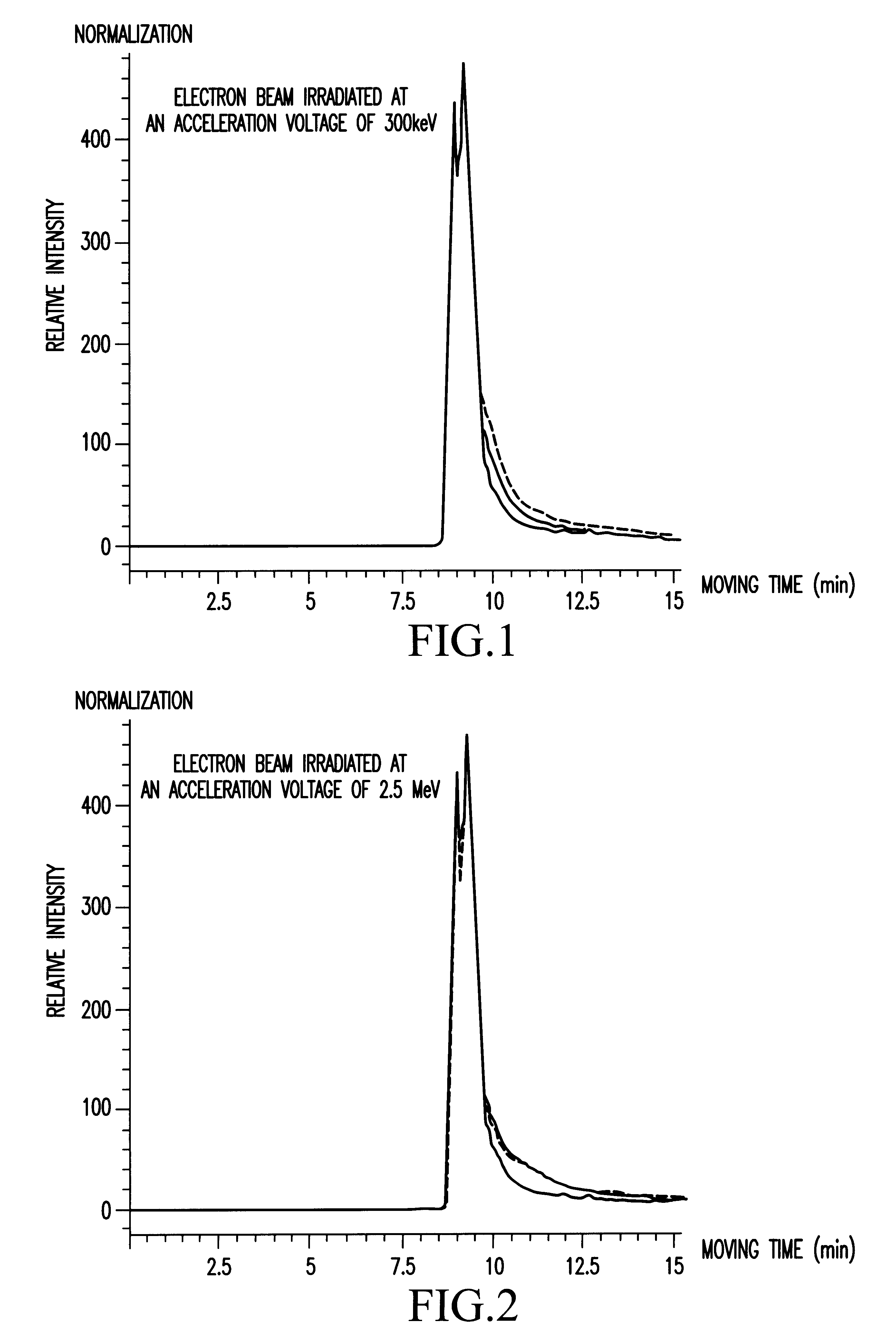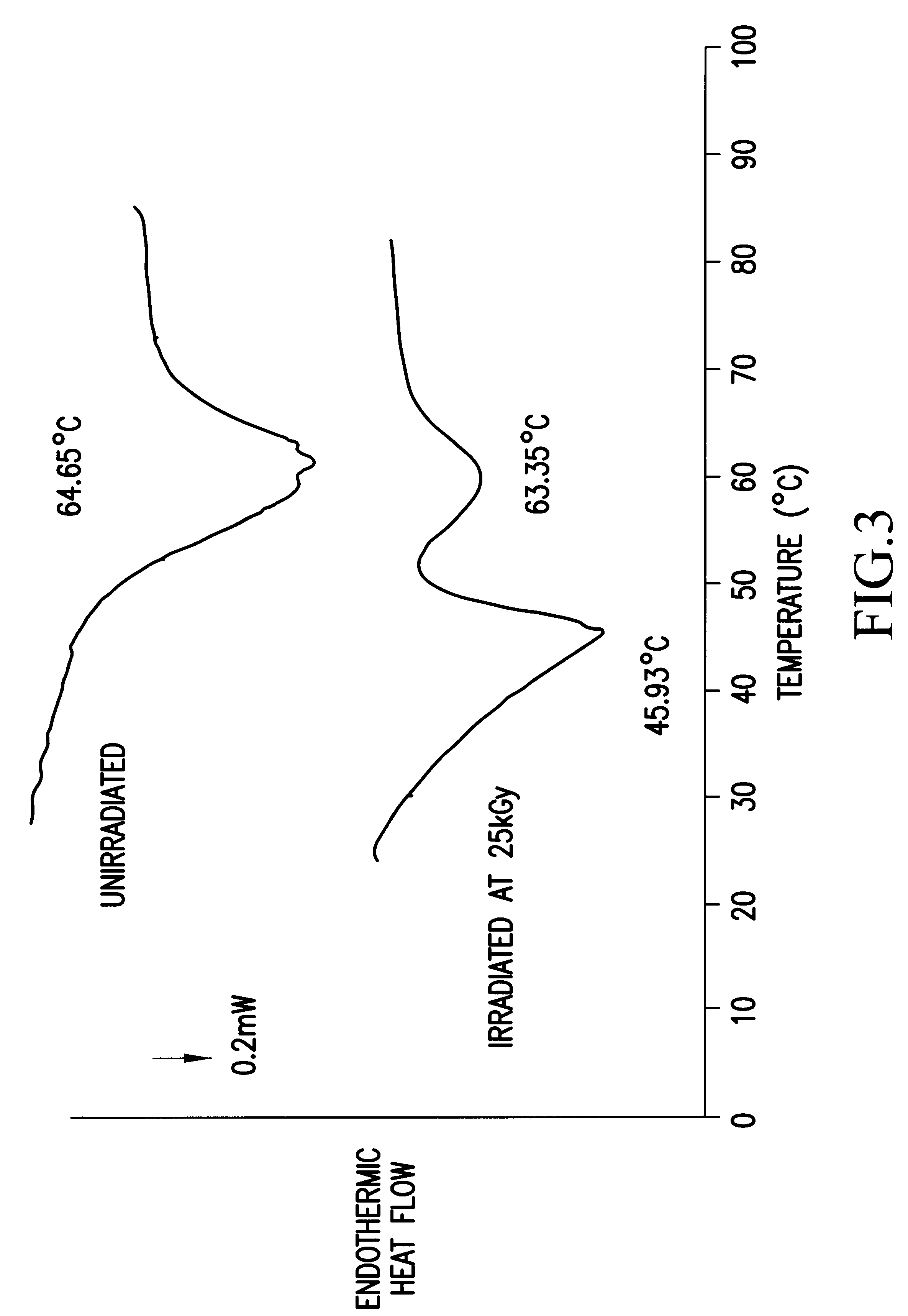Method for improving solubility of protein
a solubility and protein technology, applied in the field of protein solubility improvement, can solve the problems of not fully exhibiting properties by the known methods, and achieve the effect of good yield
- Summary
- Abstract
- Description
- Claims
- Application Information
AI Technical Summary
Benefits of technology
Problems solved by technology
Method used
Image
Examples
example 1
Powders of thaumatin (produced by Talin Food, Lot No. J99, containing 98 wt % of protein and 5 wt % of water) were put in a polyethylene bag (140 mm height.times.140 mm width.times.0.08 mm thickness) and spread thinly to have a thickness of 5 mm. Irradiation was performed in the presence of air.
A Van de Graaff's electron accelerator (manufactured by Nisshin High Voltage Co. Ltd.) was used for the irradiation. The irradiation was performed at acceleration voltages of 300 kev (a dose rate of 2.0.times.10.sup.6 Gy / hr) and 2.5 Mev (a dose rate of 1.5.times.10.sup.6 Gy / hr). Absorbed doses were 5 kGy and 25 kGy at a relative depth of 80% from the surface (current flow: 10.8, 32.1 mA; rate: 50 m / min; irradiation range: 20 cm). The absorbed dose was confirmed by using a cellulose triacetate dosemeter.
A. Measurement of Molecular Weight Distribution
Electron beam-irradiated samples of 10 mg were weighed accurately and water was added to 100 ml in total. The sample solutions were measured by HP...
example 2
Using .alpha.-casein (produced by Sigma, Lot No. 82H9575, molecular weight of 23000) as a sample material, electron beam having an absorbed dose of 25 kGy was irradiated at a dose rate of 1.5.times.10.sup.6 Gy / hr and an acceleration voltage of 2.5 MeV under the same conditions as in Example 1.
A. Static Light Scattering Method
In the same manner as in Example 1, hydrophilicity on the surface and the molecule size of .alpha.-casein irradiated with the electron beam were measured and changes of the molecule were observed.
As a result thereof, hydrophilicity of .alpha.-casein also increased through the electron beam irradiation, indicating that water solubility thereof was provided. According to such a characteristic change, a tendency for .alpha.-casein to increase from 45 mer to 54 mer was observed. This indicated that the irradiated .alpha.-casein increased water solubility and gained stability in an aqueous phase.
B. Differential Thermal Analysis (DSC)
In the same manner as in Example 1...
example 3
With a sample material of plasma protein (produced by AMPC, Lot No. F5704) utilized for livestock products by using polyphosphate, electron beam irradiation was performed under the same conditions as in Example 2.
A. Static Light Scattering Method
In the same manner as in Example 1, molecular changes of the irradiated samples and the unirradiated samples were observed and the following results were obtained.
Similar to Examples 1 and 2, hydrophilicity increased through the electron beam irradiation and a tendency for the plasma protein to increase from 6 mer in an ordinary state to 11-12 mer was observed. Thus, it was confirmed that the irradiated plasma protein gained the same properties as those of a protein subjected to solubilization in water, while sufficiently maintaining gelation properties necessary for the plasma protein.
B. Differential Thermal Analysis (DSC)
In the same manner as in Example 1, dissolving temperatures of the irradiated samples and the unirradiated samples were ...
PUM
| Property | Measurement | Unit |
|---|---|---|
| Energy | aaaaa | aaaaa |
| Energy | aaaaa | aaaaa |
| Fraction | aaaaa | aaaaa |
Abstract
Description
Claims
Application Information
 Login to View More
Login to View More - R&D
- Intellectual Property
- Life Sciences
- Materials
- Tech Scout
- Unparalleled Data Quality
- Higher Quality Content
- 60% Fewer Hallucinations
Browse by: Latest US Patents, China's latest patents, Technical Efficacy Thesaurus, Application Domain, Technology Topic, Popular Technical Reports.
© 2025 PatSnap. All rights reserved.Legal|Privacy policy|Modern Slavery Act Transparency Statement|Sitemap|About US| Contact US: help@patsnap.com



